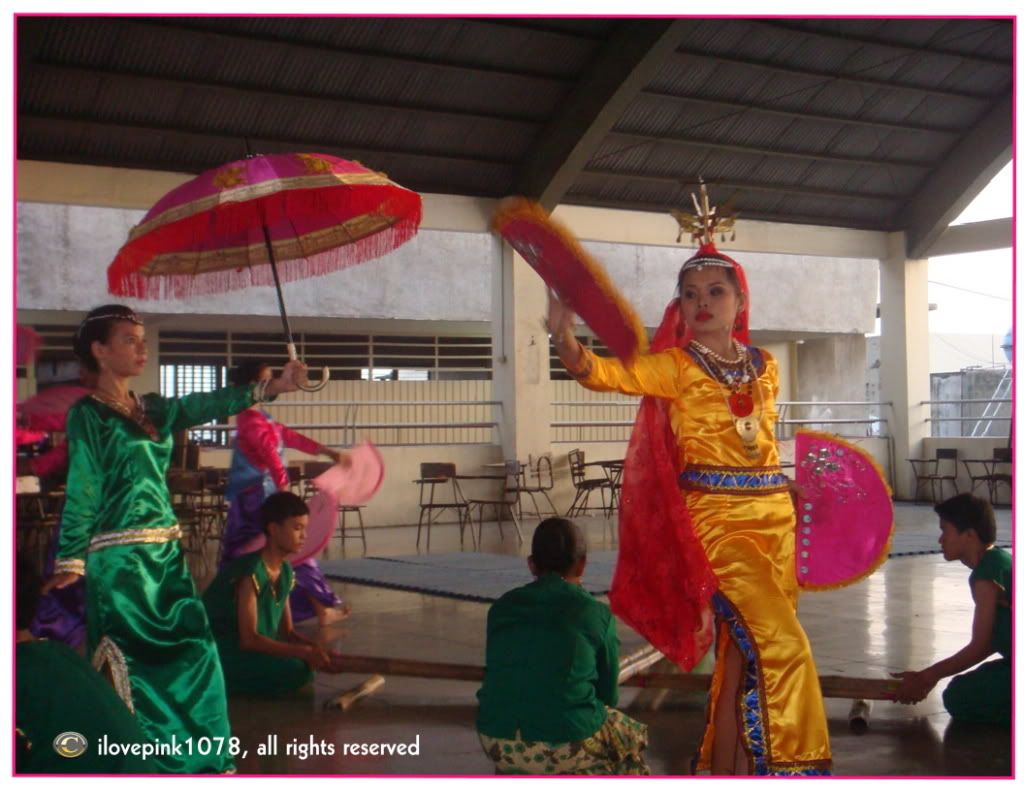MUSLIM SUITE
Singkil dance takes its name from the bells worn on the ankles of the Muslim princess. Perhaps one of the oldest of truly Filipino dances, the Singkil recounts the epic legend of the "Darangan" of the Maranao people of Mindanao. This epic, written sometime in the 14th century, tells the fateful story of Princess Gandingan, who was caught in the middle of a forest during an earthquake caused by the diwatas, or fairies of the forest. The criscrossed bamboo poles represent the trees that were falling, which she gracefully avoids. Her slave loyally accompanies her throughout her ordeal. Finally, she is saved by the prince. Dancers skillfully manipulate apir, or fans which represent the winds that prove to be auspicious. Royal princesses to this day in the Sulu Archipelago are required to learn this most difficult and noble dance.
There are other versions of Singkil. Perhaps the version more widely performed by dance companies is the "Garden Singkil." The story goes that the princess goes into her garden, accompanied by her slave, and plays with the butterflies, which are represented by the fan dancers. The movements of the fans supposedly represent those of the butterflies, as opposed to the diwatas. In another popular version, the prince uses a scarf instead of a sword.
Thank you for reading and commenting...















0 comments:
Post a Comment
Thank You So Much and More Power!
Like to visit my other sites:
Pink Go Green
MAPEH homepage